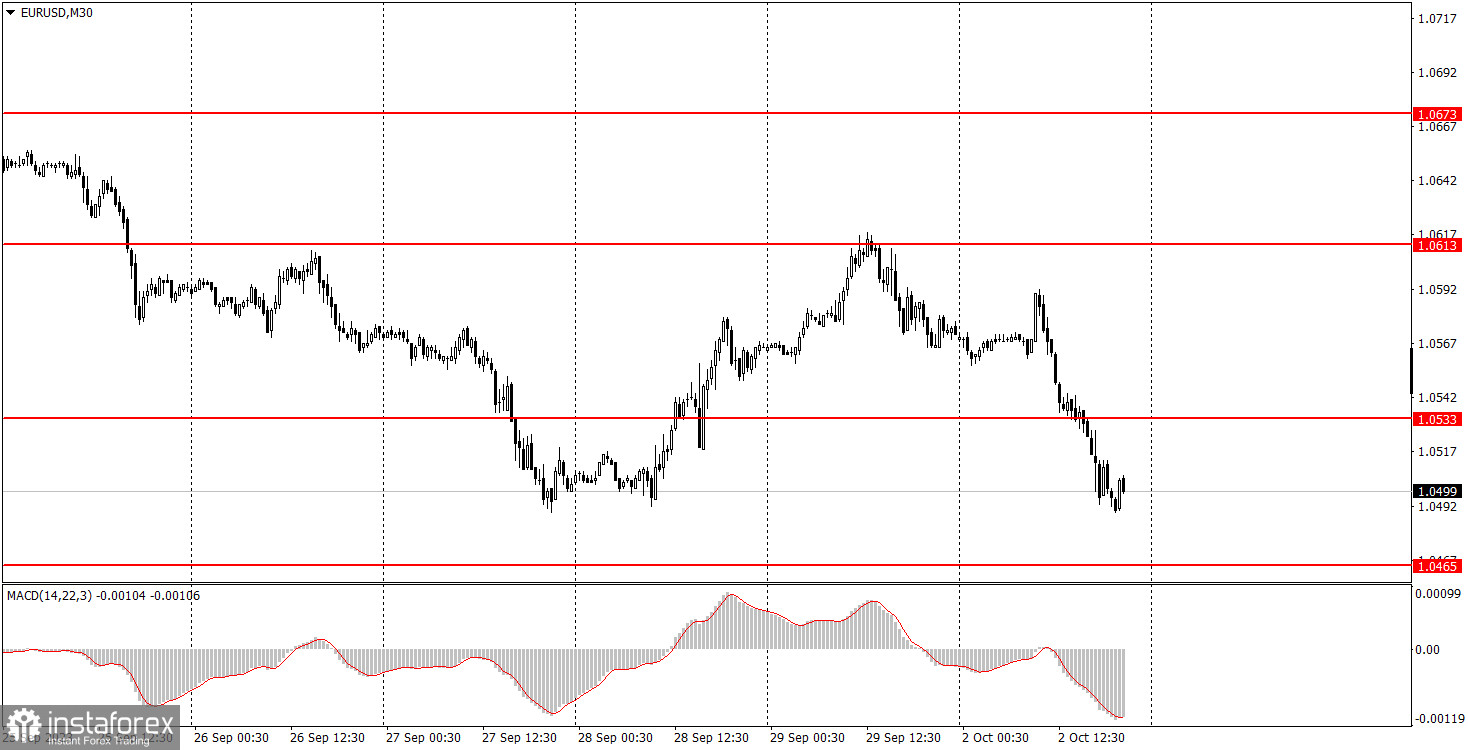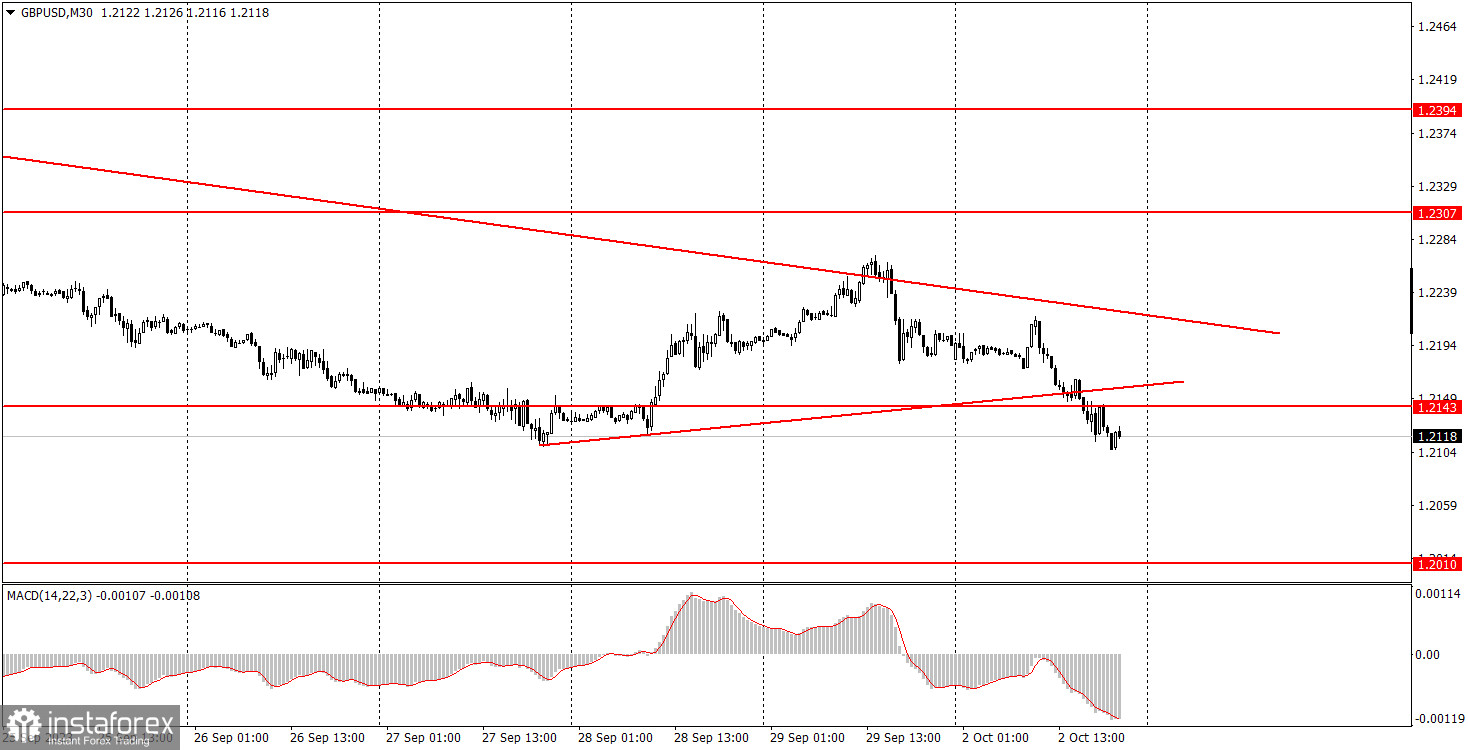Analysis of macroeconomic reports:

For Tuesday, the lineup of macroeconomic events is practically barren. The main item on today's agenda is the Job Openings and Labor Turnover (JOLTS) report in the United States. This indicator has been declining for over six months, which shouldn't come as a surprise given the Federal Reserve's monetary policy. Therefore, it wouldn't be surprising if the report shows another decline, as the dollar has been recovering all the losses it incurred over the past year in the last two months. The value of the July report was 8.8 million, and experts forecast the same 8.8 million for the August report. Even if the actual value for August is lower, it is unlikely to be detrimental to the dollar. It's possible for both currency pairs to correct higher, but in the medium term, we expect the US dollar to rise further.
Analysis of fundamental events:
From Tuesday's fundamental events, we can highlight the speeches of European Central Bank Chief Economist Philip Lane and Federal Reserve official Raphael Bostic. But take note that Fed Chair Jerome Powell's speech did not stir any market reaction on Monday. The markets currently have a clear understanding of what to expect from the US and European central banks, so it is very difficult to expect any unforeseen information.
General conclusion:
There are hardly any important events on Tuesday. Market participants will keep an eye on the JOLTS report and that's about it. It may provoke a strong market reaction in the case of a significant deviation of the actual value from the forecast. However, we don't see any specific reasons for the dollar to rise at the beginning of the new week, and we are also inclined to believe in a new corrective phase. However, it's important to remember that the market is currently bearish.
Basic rules of a trading system:
1) Signal strength is determined by the time taken for its formation (either a bounce or level breach). A shorter formation time indicates a stronger signal.
2) If two or more trades around a certain level are initiated based on false signals, subsequent signals from that level should be disregarded.
3) In a flat market, any currency pair can produce multiple false signals or none at all. In any case, the flat trend is not the best condition for trading.
4) Trading activities are confined between the onset of the European session and mid-way through the U.S. session, post which all open trades should be manually closed.
5) On the 30-minute timeframe, trades based on MACD signals are only advisable amidst substantial volatility and an established trend, confirmed either by a trend line or trend channel.
6) If two levels lie closely together (ranging from 5 to 15 pips apart), they should be considered as a support or resistance zone.
How to read charts:
Support and Resistance price levels can serve as targets when buying or selling. You can place Take Profit levels near them.
Red lines represent channels or trend lines, depicting the current market trend and indicating the preferable trading direction.
The MACD(14,22,3) indicator, encompassing both the histogram and signal line, acts as an auxiliary tool and can also be used as a signal source.
Significant speeches and reports (always noted in the news calendar) can profoundly influence the price dynamics. Hence, trading during their release calls for heightened caution. It may be reasonable to exit the market to prevent abrupt price reversals against the prevailing trend.
Beginning traders should always remember that not every trade will yield profit. Establishing a clear strategy coupled with sound money management is the cornerstone of sustained trading success.
 English
English 
 Русский
Русский Bahasa Indonesia
Bahasa Indonesia Bahasa Malay
Bahasa Malay ไทย
ไทย Español
Español Deutsch
Deutsch Български
Български Français
Français Tiếng Việt
Tiếng Việt 中文
中文 বাংলা
বাংলা हिन्दी
हिन्दी Čeština
Čeština Українська
Українська Română
Română


